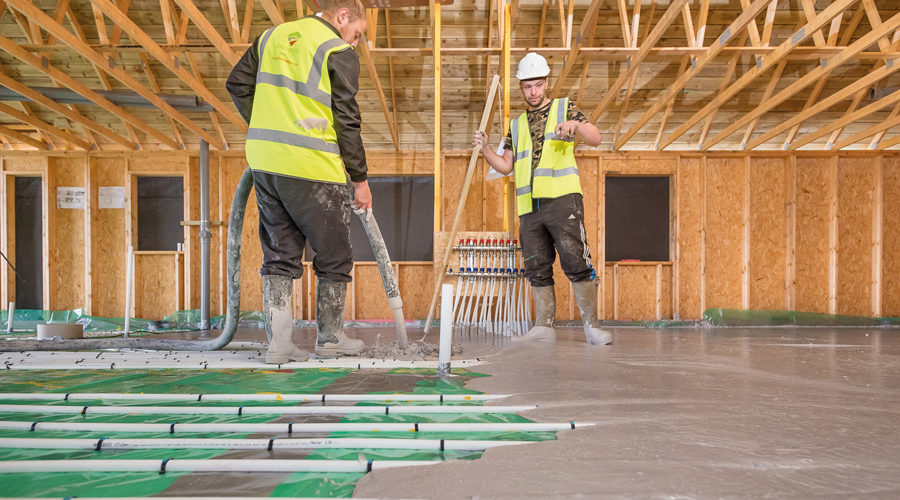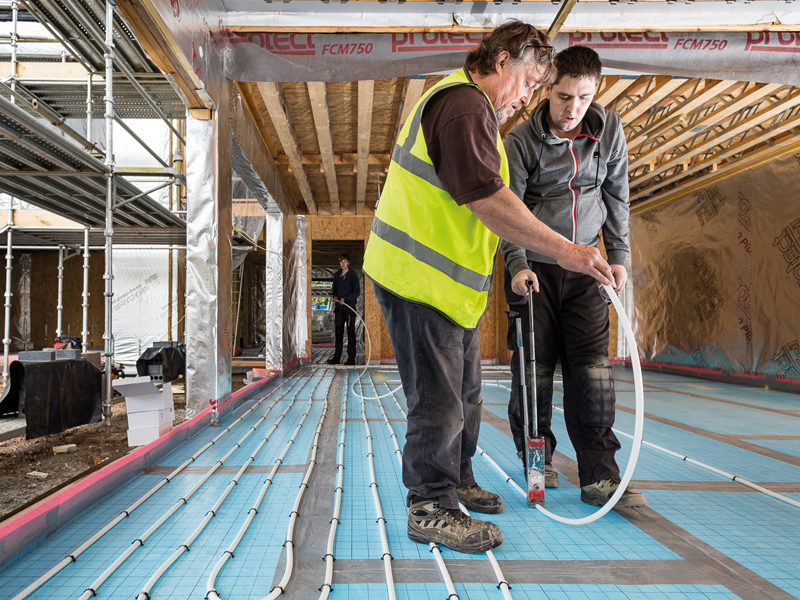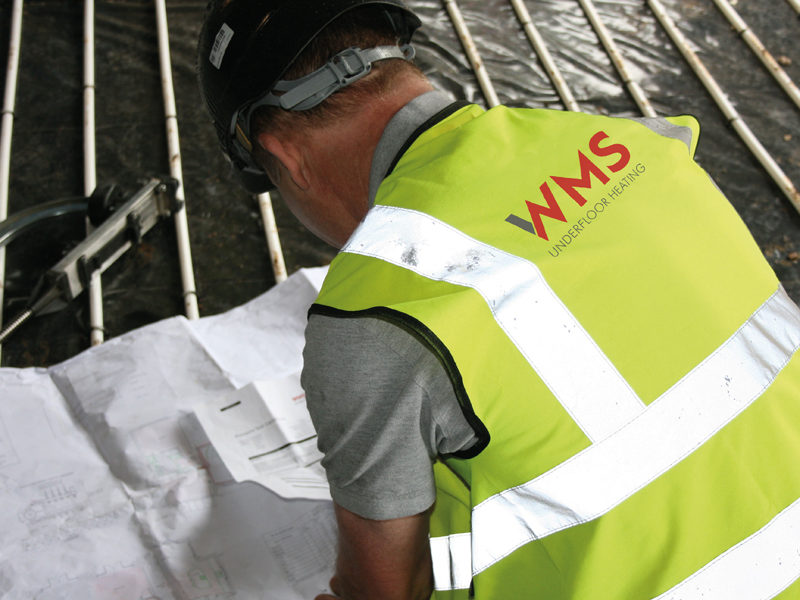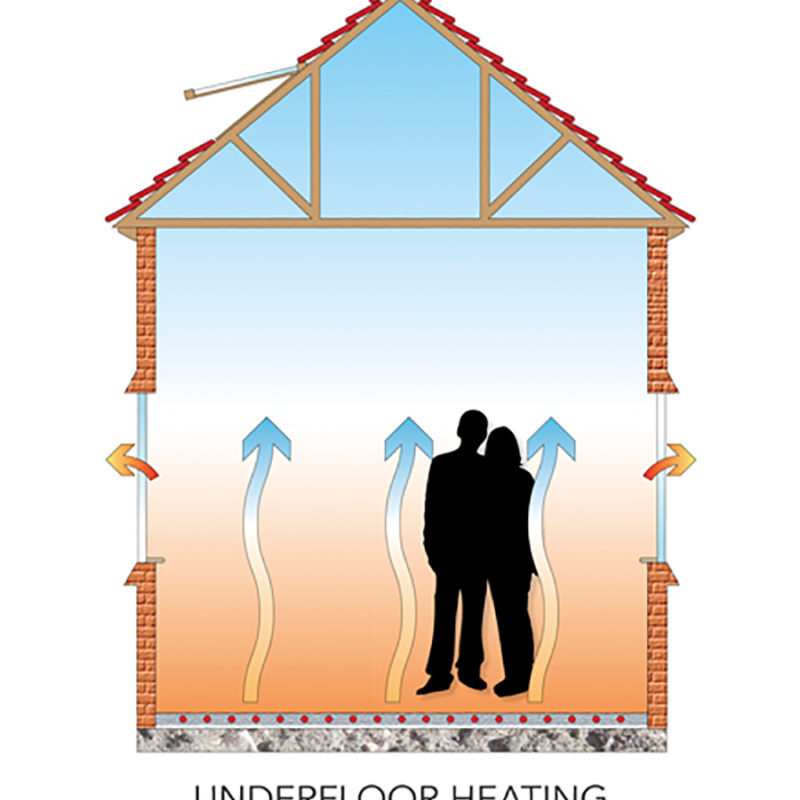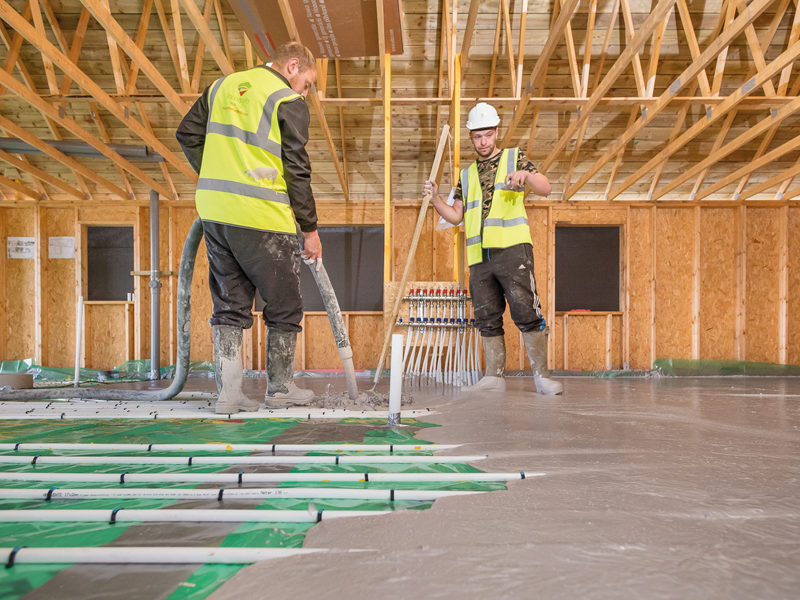There are many considerations when specifying products to enhance the safety and wellbeing of building users and occupants – from reducing risk of injury to improving the indoor climate. Here, Ashley Cooper, Managing Director at WMS, a leading supplier and installer of underfloor heating systems, offers his thoughts on why radiant heating is the key to creating healthier and safer buildings for the future.
WMS
Whatever the planned usage, taking a people-first approach is vital when building and specifying commercial and residential properties. So, when it comes to the heating system, striking the right balance involves creating an environment that is safe and pleasant for those who live or work within the building, and visitors who are less familiar with the surroundings.
One product which ticks all the right regulatory boxes, whilst incorporating safety, health and wellbeing aspects into the very fabric of a building, is underfloor heating.
Step onto the solution
Increasingly viewed as the ideal solution for developers and contractors, hydronic (water-based) underfloor heating circulates warm water through a series of continuous loops that are fitted under a floor. This process creates a large radiant surface to heat a space from the floor upwards.
Designed to cover a much greater surface area than radiators, underfloor heating runs at lower temperatures (45°C rather than 80°C) when compared to traditional convection radiator systems. This factor also makes underfloor heating systems perfectly suited to address the upcoming low water temperature update to the Building Regulations and Part L, which comes into force this June (2022) and will affect new-build homes.
From this point, there will be an enforced 31% reduction in CO2 from new dwellings compared to current standards and new home heating systems will also be required to have a maximum flow temperature of 55°C – something by its very design underfloor heating is easily able to achieve.
Another key benefit of underfloor heating is the ease of integration with renewable energy sources. When paired with such technologies, the entire system also becomes more efficient as the energy source doesn’t need to work as hard, as underfloor heating is able to run at lower temperatures.
Safety as standard
While thermostatic radiator valves on modern heating systems can provide more control, if temperatures remain set to high levels, serious injuries can occur if children, elderly or vulnerable people make contact with these scalding hot metal units. Every month, 590 children require admission to an NHS burns service following a severe burn or scald injury1.
Risk of serious accidents associated with radiators can be prevented through the specification of underfloor heating, which eliminates the danger of burning hot radiator surfaces and pipework from the building, while offering all the warmth, zoning and control required.
In addition to creating a comfortable and safe environment, from a maintenance perspective, underfloor heating also takes away costly maintenance time to address common radiator system issues. Typically, radiators require an annual check for air in the system/bleeding and sometimes more invasive inhibitor dosing is needed, plus they may need to be fully replaced every 10 to 15 years.
On the other hand, underfloor heating requires very little maintenance, with WMS offering a 75-year pipework warranty, making it possible for the system to outlive the life of the building itself.
Wellbeing advantages
Air quality has become an increasingly important aspect when integrating health and wellbeing into the design of a building, particularly to support those who suffer with allergies and asthma, or for settings where infection control is vital.
Currently 5.4 million2 people in the UK are receiving treatment for asthma, while a staggering 44%3 of British adults now suffer from at least one allergy. The number of sufferers is also on the rise, so it’s never been more important to specify solutions which reduce any possible triggers.
While fabrics are typically known as the main culprits for harbouring dust mites, skin cells and dander, convection heating systems are also a magnet for dust and germs which gather behind and inside the panels. This also creates an additional cleaning and maintenance requirement, as radiators will need to be regularly checked for any lingering dust and allergens gathered between the panels.
Allergy and asthma symptoms can also be further exacerbated when the system is turned on and convection heating currents circulate these problematic particles into the atmosphere. This is just one of the issues that underfloor heating can help with, as radiant heat reduces the movement of dust – and reduces the spread of viruses or germs – making it one of the healthiest ways to heat a building.
Another added health benefit is that radiant heat eliminates cold spots from a room, where mould could develop as the heat is radiating from the whole floor surface. Mould not only adds to maintenance requirements, but also exasperates respiratory conditions too, so by nature, underfloor heating ticks all the right boxes.
Sources:
1. Children’s Burns Trust
2. Asthma UK, 2017
3. Mintel 2010



